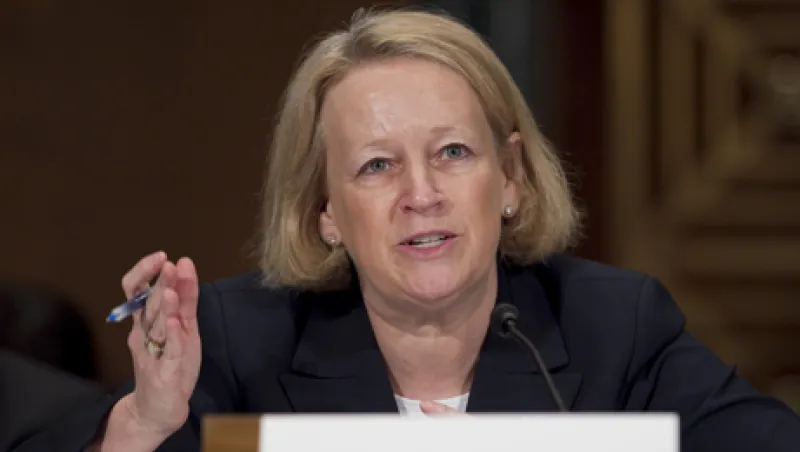Months of stalemate between regulators and money market funds appears to be breaking in favor of the fund industry, if only because doing nothing preserves the status quo.
When SEC chairwoman Mary Schapiro shocked investors in November with a second set of far-reaching reform options, it was believed that specific proposals would be on the table by late spring. Shapiro mentioned several possibilities, including floating net asset values, capital buffers, and redemption holdbacks.
But it now seems that Schapiro, in the face of withering industry resistance, has been unable to garner the two additional votes on the five-member SEC panel needed to issue a formal proposal. Three SEC commissioners — Louis Aguilar, Troy Paredes and Dan Gallagher — telegraphed their opposition when they authored a sharply worded dissent to an April 27 analysis of the topic by IOSCO, the International Organization of Securities Commissions.
“The delay in the commission putting a proposed rule out reflects the chairman’s lack of a majority,” says John Hawke, Jr., a Washington-based attorney with Arnold & Porter who represents Federated Investors, the large institutional money fund manager. “She is not going to come forward with a proposal if she only has two votes out of five.”
Yet Schapiro labors on, reiterating that even the most controversial option — a floating NAV — remains under consideration. Speaking at an annual Investment Company Institute’s conference on May 11, Schapiro expressed “very legitimate concerns about the risks that are posed by the stable NAV and the potential to cause runs. We all know what happened in 2008.”
The ICI cites the ability of the money fund industry to weather destabilizing geopolitical events in mid-2011 as clear evidence that enough has been done to safeguard against asset runs. “We had a test run last summer, when the euro zone crisis erupted at the same time as the debt crisis standoff and subsequent lowering of the U.S. credit rating,” says Karrie McMillan, the ICI’s general counsel. “Yet money funds were not stressed because they had the liquidity in place to deal with it.”
The ICI does not dispute that changes enacted after the 2008 financial crisis have been effective. Yet opponents of additional reform measures portray Schapiro’s latest ideas as the regulatory equivalent of a poky driver doing 40 miles an hour on the Interstate; the slow moving vehicle may be marginally safer, yet disrupting the normal traffic flow puts everyone else in harm’s way. On May 16 the ICI issued a 28-page report that concluded “cash balances could migrate to less-regulated, more opaque financial instruments, which would make it more difficult for regulators to identify and manage systemic risk.”
Hawke also thinks that additional changes could do more harm than good. “A 30-day holdback would drive shareholders out in droves,” he says. “Institutional investors want a simple, predictable, safe means of temporarily storing liquidity. A dollar-in, dollar-out is enormously important to them. These ideas are very ill-considered, and if they were put in place, they would be very likely to have perverse, unintended consequences.”
Despite industry pushback, “the Fed, Treasury and banking regulators are urging the SEC onward,” says Peter Crane, publisher of Money Fund Intelligence. Crane notes, however, that it is unclear if those institutions have any jurisdiction in the matter. Still, the Boston Fed is preparing a white paper, due for release by early fall, that promises to reveal more than 50 alleged instances between 2007 and 2010 in which sponsors avoided breaking the buck only by injecting an aggregate $3.2 billion into money funds through the purchase of troubled securities or the direct infusions of cash. Assuming Schapiro persuades at least one additional SEC commissioner to side with her, a comment period lasting several months would follow. The SEC would then take a few more months to further debate the issue before issuing a final — and presumably, binding — ruling.
Crane thinks that compromise remains the most likely outcome. Yet the issue has clearly become more contentious recently. “Regulators have overreached and see the window of opportunity closing,” he said. “The proposals that have been discussed have to be watered down or they are not going to fly.”






